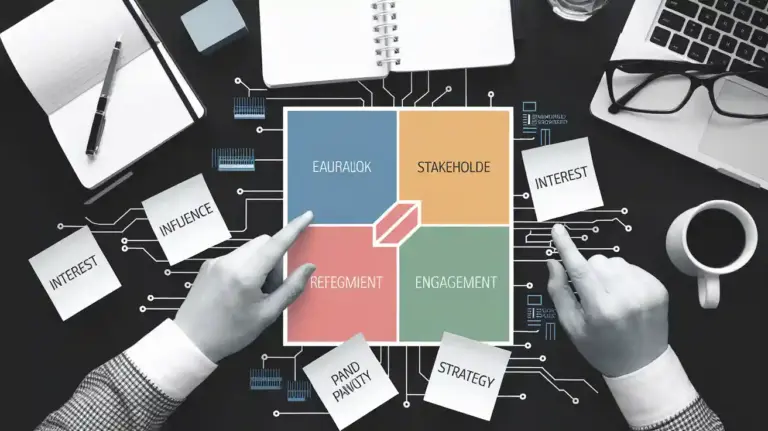Are you struggling to implement change in your workplace? Do you find that your team is resistant to new ideas and processes? Overcoming resistance to change is a common challenge faced by many organizations, but it doesn’t have to be a roadblock to progress.
By building a more agile workforce, you can create a culture that embraces change and adapts quickly to new challenges.
In this article, we will explore strategies for overcoming resistance to change and building a more agile workforce. We will discuss the importance of understanding the reasons behind resistance to change and how to create a culture that fosters innovation and adaptation.
We will also delve into effective communication strategies, building collaborative teams, and developing agile leadership skills. By the end of this article, you will have the tools and knowledge to overcome resistance to change and build a more agile, dynamic, and successful organization.
Understanding Resistance to Change
You’re currently exploring the factors that make people hesitant to embrace new ideas, and how to navigate these challenges.
One common reason why people resist change is the fear of the unknown. They may worry about losing their job, their status, or their skills becoming outdated. This fear can cause them to cling to the familiar and resist the new, even if it could be beneficial in the long run.
Another factor that contributes to resistance to change is the psychological discomfort that comes with it. Change can disrupt our sense of control, stability, and predictability, which can lead to anxiety, stress, and even depression. This discomfort can be particularly strong if the change is imposed upon us without our input or if we feel that we are being forced to adapt to something we don’t agree with.
To overcome resistance to change, it’s important to take these psychological factors into account and to build trust and buy-in among those affected by the change. This can be done by involving them in the planning process, communicating clearly and transparently about the reasons for the change, and addressing their concerns and fears. By showing empathy and understanding, you can create a more positive and supportive environment that encourages people to embrace new ideas and approaches.
Creating a Culture of Change
In order to foster a culture that embraces evolution, it’s crucial to explore the validity of theories and convey meaningful insights to your team.
One way to promote innovation is to encourage brainstorming sessions where team members can share their ideas and opinions. This allows for a diverse range of perspectives to be heard and considered. It’s important to create an environment where everyone feels comfortable sharing their thoughts without fear of judgment or rejection.
Embracing flexibility is also essential in creating a culture of change. As your team evolves and grows, it’s important to be adaptable and open to new ideas. This means being willing to make changes and adjust plans as necessary. Encouraging experimentation and taking calculated risks can help your team develop new skills and approaches to problem-solving. It’s important to provide support and resources for your team to help them navigate any challenges that may arise during the change process.
To sum up, creating a culture of change is key to overcoming resistance to change. By embracing flexibility and promoting innovation, you can help your team become more agile and better equipped to handle any changes that come their way. By providing a supportive environment where everyone feels comfortable sharing their ideas and taking risks, you can help your team develop the skills and mindset necessary to thrive in an ever-changing business landscape.
Effective Communication Strategies
Communicating effectively is crucial for achieving success in any team and requires clear and concise messaging. Active listening is a key component of effective communication. This involves not only hearing what the other person is saying but also understanding their perspective.
When you actively listen, you show that you value the other person’s input and are willing to work together to find a solution. To be an active listener, you must be fully present in the conversation and avoid distractions such as checking your phone or multitasking.
Clear messaging is also essential for effective communication. When you communicate, it’s important to express your thoughts and ideas in a way that’s easy for others to understand. This means using simple language, avoiding jargon or technical terms, and being specific about what you mean.
It’s also important to consider your audience and tailor your message to their needs and preferences. By doing so, you can ensure that your message is received and understood by everyone in the team.
In summary, effective communication requires active listening and clear messaging. By actively listening, you can understand the perspectives of others and work together to find a solution. Clear messaging, on the other hand, ensures that your thoughts and ideas are understood by everyone in the team.
To build a more agile workforce, it’s important to develop effective communication strategies that promote collaboration, understanding, and trust.
Building Collaborative Teams
Working together collaboratively is essential for achieving success in any team, and you can do this by focusing on developing strong relationships and effective communication.
Building collaborative teams requires effort and commitment from each team member. Team building activities can be a great way to foster trust and build strong relationships within the team. These activities can range from a simple icebreaker game to a full-day team-building retreat. The goal is to create an environment where team members can get to know each other better, share ideas, and build trust.
Fostering trust is crucial to building a collaborative team. Without trust, team members may feel hesitant to share their ideas or take risks, which can ultimately hinder the team’s progress.
One way to build trust is by creating an open and transparent communication channel. Encourage team members to share their thoughts and opinions freely, and ensure that everyone’s ideas are heard and valued. Additionally, it’s essential to establish clear roles and responsibilities for each team member. When everyone knows what is expected of them, it can help build trust and reduce misunderstandings.
Another effective way to build a collaborative team is by fostering a culture of accountability. Each team member should feel responsible for the team’s success and hold themselves accountable for their actions. Encourage team members to take ownership of their work and to support each other in achieving their goals. Celebrate successes and learn from failures as a team.
By creating a sense of accountability, team members will be more invested in the team’s success, and collaboration will come more naturally. Remember that building a collaborative team takes time and effort, but the results are well worth it.
Developing Agile Leadership Skills
You can enhance your leadership skills by adapting to new situations and being flexible, like a tree swaying in the wind to weather any storm. Developing an agile mindset is crucial in today’s fast-paced business environment. It means being able to quickly adjust to changes and make decisions based on the latest information available.
To achieve this, leaders need to be willing to learn continuously and embrace new ideas and technologies. To develop an agile mindset, leaders must first understand their own strengths and weaknesses. This self-awareness allows them to identify areas where they need to improve and seek out opportunities for growth.
Leaders should also encourage their team members to develop their own agile mindset by providing them with opportunities to learn and experiment. This creates a culture of continuous learning and innovation, which is essential for building an agile workforce.
In addition to developing an agile mindset, leaders also need to cultivate other skills, such as effective communication, emotional intelligence, and strategic thinking. By developing these skills, leaders can better understand and motivate their team members, build strong relationships with stakeholders, and make informed decisions that drive the organization forward.
Ultimately, agile leadership is about being able to adapt to new challenges and opportunities, while staying focused on the big picture. With the right mindset and skills, leaders can build a more agile workforce that is capable of thriving in today’s rapidly changing business landscape.
What Strategies Can Be Used to Build a More Agile Workforce in a Fast-Paced World?
To build a more agile workforce in a fast-paced world, companies can implement agile change management strategies. This involves creating a culture of adaptability, promoting continuous learning and development, and empowering employees to make decisions. By embracing change and emphasizing flexibility, organizations can better respond to the dynamic demands of the modern workplace.
Conclusion
In conclusion, overcoming resistance to change requires a multifaceted approach that involves creating a culture of change, effective communication, building collaborative teams, and developing agile leadership skills.
To achieve these goals, you need to understand the reasons behind resistance to change and address them through targeted interventions.
By creating a culture that embraces change, you can increase employee engagement and motivation, which will help your organization adapt to new challenges and opportunities.
Effective communication is also critical to overcoming resistance to change. By keeping your employees informed and involved in the change process, you can reduce anxiety and build trust.
Building collaborative teams can also help to overcome resistance to change by creating a sense of ownership and shared responsibility.
Finally, developing agile leadership skills can help you to navigate the complexities of change and inspire your team to embrace new ways of working.
By following these strategies, you can build a more agile workforce that is better equipped to thrive in today’s rapidly changing business environment.





